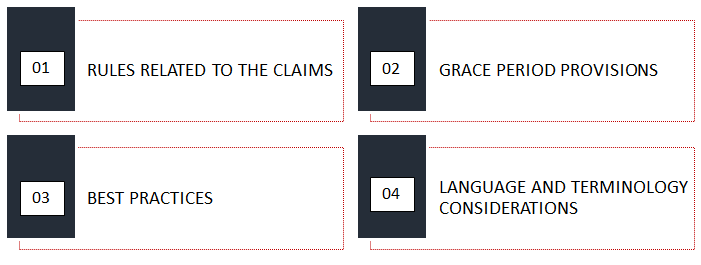How to Write a Patent Application Across Multiple Jurisdictions: Crucial Factors to Consider
When venturing into the realm of international patent protection, understanding the complexities of patent law across multiple jurisdictions is paramount. From drafting a patent application to navigating procedural nuances, the global patent filings require a comprehensive understanding of diverse legislative frameworks and procedural nuances. One crucial aspect is knowing how to write a patent application that maintains relevance and validity across various regions. This involves a deep understanding of the differences in patent laws from one jurisdiction to another. Therefore, recognizing the importance of a comprehensive strategy that addresses the specific requirements of each jurisdiction is essential for successful global patent filings.
In this article, we will delve into the essential factors to consider when drafting a patent application across multiple jurisdictions. By acknowledging and addressing the challenges posed by different patent laws, inventors and businesses can optimize their approach, ensuring comprehensive protection and unlocking commercial benefits on a global scale.
Table of Contents
Understanding the Importance of Writing a Patent Application for Multiple Jurisdictions
When it comes to protecting your inventions, a one-size-fits-all approach simply won’t cut it in today’s globalized world. Each jurisdiction has its unique patent laws and requirements, making it essential to draft a patent application that meets the specific criteria of each jurisdiction. By doing so, you can ensure that your intellectual property rights are adequately protected in each market you operate in.
Advantages of Multi-Jurisdictional Patent Applications
- Firstly, it allows you to secure your inventions in different countries, giving you a competitive advantage and positioning your company for global success, considering that patent rights are territorial rights and a patent grant in one jurisdiction does not give exclusive rights in other jurisdictions that may be of interest to a filer.
- Secondly, it provides protection against potential infringement in different geographies of interest, preventing others from copying or using your inventions without permission.
- Lastly, filing patent applications in multiple jurisdictions enhances the value of your intellectual property portfolio, making it more attractive to potential investors or buyers.
Key Factors in Drafting a Patent Application for Multiple Jurisdictions
To master how to write a patent application for multiple jurisdictions, the drafter needs to be aware of all the different requirements that ought to be present in the patent application. Some critical considerations while writing a patent application are shown in Figure 1 below:

Conducting a Comprehensive Prior Art Search
Before drafting your patent application, it is crucial to conduct a comprehensive prior art search across all relevant jurisdictions to ensure that your invention meets the patentability criteria in each country or region. This helps identify any existing prior art that could potentially impact the patentability of your invention in a particular jurisdiction. By conducting a thorough search, you can assess the patentability of your invention in different jurisdictions and make informed decisions regarding the scope and strategy of your patent application.
A thorough prior art search not only assists in identifying existing technologies or inventions that may be like yours but is also a crucial step in understanding how to write a patent application that stands out in various jurisdictions. This knowledge allows you to refine your invention and draft claims that are unique and distinguishable from prior art. It also helps you anticipate potential objections or rejections from patent examiners, allowing you to address them proactively in your application.
Read this article to know the 6 metrics to ensure the comprehensiveness of prior art searches
Understanding Jurisdictional Requirements
Drafting claims is a critical aspect of patent application writing, as they define the scope of protection for your invention. When filing across multiple jurisdictions, tailoring claims to meet each region’s specific requirements is vital. Here’s a breakdown:
European Patent Office (EPO):
- The EPO permits up to 15 claims without extra charges.
- Multiple-dependent claims are treated as a single claim, without additional upfront costs.
- Experts advise preparing claim sets with multiple-dependent claims for EPO applications.
United States Patent and Trademark Office (USPTO):
- USPTO allows 20 claims without additional fees.
- Adding multiple-dependent claims incurs an upfront fee of USD 820, counted as unique claims.
- For USPTO filings, removing multiple dependencies from dependent claims is recommended.
- The US allows for three independent claims, offering a broader protection scope.
When filing patent applications through the Patent Cooperation Treaty (PCT) or originating from the United States (US), it is important to consider how multiple-dependent claims are treated in later filings with the European Patent Office (EPO). To avoid potential issues during the EPO application process, experts recommend a strategy that involves incorporating specific sections from the US applications directly into the detailed description of the patent. By doing so, you ensure that the content remains consistent between the US and EPO filings, avoiding the introduction of new subject matter in the EPO application. This approach improves the chances of a smooth and successful patent prosecution process.
Leverage International Frameworks for Optimal Efficiency
By leveraging international frameworks like the Patent Cooperation Treaty (PCT) or European Patent Convention (EPC), you can effectively streamline the patent application process while keeping costs to a minimum. These frameworks allow for the filing of a single application that can designate multiple jurisdictions, deferring the requirement for individual national or regional examinations until a later stage. Additionally, they provide additional benefits such as access to search and preliminary examination reports, further enhancing the efficiency and effectiveness of the patent application process. These reports play a vital role in evaluating the patentability of your invention and provide valuable insights that facilitate adjustments to your application if necessary.
Moreover, you can also leverage the Patent Prosecution Highway (PPH) services, which allows you to request accelerated processing of a European application if the claims have been deemed patentable/allowable by another office. This enables accelerated patent examination procedures among participating countries such as the US, Japan, Korea, China, and the European Patent Office members.
By harnessing these international frameworks, innovators can efficiently navigate the complexities of global patent protection and maximize the potential value of their intellectual property.
Navigating Grace Periods Across Different Countries
Understanding grace periods is essential in patent application filing to prevent public disclosure from becoming “prior art.” This disclosure is crucial for the examiner to assess the novelty and inventive step of the invention. However, various countries offer a “grace period” to inventors to provide some leniency in such situations. These grace periods differ among countries, allowing inventors to file patent applications even after public disclosure under certain conditions.
Here’s a comparison of grace periods in different countries:
United States and South Korea:
- Enjoy a generous grace period of one year before the effective filing date.
- Public disclosure, subject to some conditions, within this timeframe does not constitute prior art.
- This leniency offers inventors ample time to refine their invention before filing for patent protection.
China:
- Imposes a stricter grace period of only six months before the filing date.
- Subject to specific limitations and scrutiny by the Chinese government.
- Inventors must act swiftly to secure patent protection within this relatively shorter timeframe.
European Patent Office (EPO):
- Offers a six-month grace period with additional constraints.
- Inventions can only be disclosed at recognized exhibitions, requiring a supporting certificate for validation.
- Inventors must adhere to strict guidelines to utilize this grace period effectively.
In summary, China and the EPO offer half the grace period compared to the US and South Korea. Therefore, it’s imperative to avoid public disclosure of the invention if the applicant intends to seek global protection for the patent application. Understanding how to write a patent application that aligns with the specific requirements of each jurisdiction is crucial for successfully navigating these grace periods.
Crafting Effective Undersigned Sections in Your Patent Application
Crafting an effective patent application demands meticulous attention to detail, particularly when drafting the undersigned sections. Below are some key considerations for the Background Section, Summary, and Claims Language that can enhance the quality and effectiveness of your patent application while focusing on how to write a patent application that maximizes its impact.
- Background Section: Be mindful of the background section, as it can influence the scope of your claims and potentially lead to rejections by the examiner. In the US, patent applications are trending towards concise backgrounds to avoid providing too much ground for potential rejections. On the other hand, the EPO employs a problem-solving approach, where stating the problem without the solution is recommended. Avoid referencing prior art or publications in this section.
- Summary: While the USPTO states that the summary is optional, it’s wise to include it, especially if you plan to file in multiple jurisdictions. A well-written summary can aid in prosecution, particularly with the EPO. Ensure the summary is clear and concise, summarizing the key aspects of your invention without revealing too much detail.
- Claims Language: Paraphrase or elevate the language of your claim language when drafting USPTO applications. Incorporate the claim language into the summary to maintain consistency and clarity. For EPO applications, integrate advantages associated with the claims into the detailed description to avoid adding new subject matter during filings in other jurisdictions.
Draft with Clarity & Consistency
Ensuring clarity and consistency in the language and structure of a patent application is paramount to its effectiveness, particularly when considering how to write a patent application that meets the requirements of various jurisdictions. Here are some key considerations to keep in mind during the drafting process:
- Consistent Terminology: It is highly recommended to use consistent terminology throughout the patent application for any jurisdiction. This ensures clarity and helps avoid subject matter-related issues in the future, particularly at the EPO and in claim construction disputes post-patent grants in the US.
- South Korean Patent Office: The South Korean patent office operates similarly to the US patent system in terms of drafting patent applications. However, it’s essential to adhere to specific requirements laid down by South Korean patent law. South Korean patent law mandates that specifications provide a detailed explanation to enable a person skilled in the art to easily practice the invention. This requirement emphasizes clarity and comprehensiveness in the written description to support the claims effectively.
- Avoid Patent Profanity: Patent applicants should be cautious of using certain words or phrases, such as “all,” “always,” “certain,” “each,” “important,” “invention,” “necessary,” “need,” “should,” and others, as they can inadvertently limit the scope of the claims or alter their meaning. This consideration applies across all jurisdictions and is essential for maintaining the broadest possible protection for the invention.
Also read Patent Drafting Mistakes – How to avoid them?
Tips and Best Practices for Success
Mastering how to write a patent application for multiple jurisdictions requires attention to detail and a thorough understanding of the patent laws and requirements of each jurisdiction. Here are some tips and best practices to consider when drafting your patent application:
- Clearly Describe Your Invention: Provide a detailed, clear, and concise description of your invention, including technical features and unique aspects.
- Emphasize Problem Solution: Highlight the problem your invention addresses, explaining how it solves challenges and its advantages over existing solutions.
- Include Detailed Visuals: Enhance understanding with detailed drawings or diagrams illustrating different components or aspects of your invention.
- Use Clear and Concise Language: Avoid complex language, use easily understandable terms for those skilled in the relevant technology.
- Anticipate Challenges: Proactively address potential challenges or objections in your application to strengthen your case for patentability.
Conclusion
Drafting a patent application can be a challenging task, particularly when preparing a common application for multiple jurisdictions. Understanding the intricacies of how to write a patent for various regions involves considering critical factors. Lack of expertise can result in a loss of time and valuable financial and human resources that could be utilized elsewhere.
Successful patent drafting for multiple jurisdictions requires in-depth knowledge of rules related to claims, grace period provisions, best practices, and languages and terminology. If you lack confidence or in-house capabilities, it’s advisable to outsource the task to a trusted third-party service provider.
Since 2008, Sagacious IP has been at the forefront of delivering high-quality IP solutions. Its team of IP experts specializes in patent drafting. The focus is not only on meeting the requirements of the concerned patent office but also to strive for the broadest coverage for the patent. Moreover, working in tandem with subject matter experts ensures the highest levels of accuracy from a technical viewpoint, for coverage over all possible variations. To learn more, visit our patent drafting service page.
– By Aastha Uppal (ICT Drafting & Prosecution), Yojit Bhugra (Engineering Drafting), & Rahul Raj (Content Creation & Strategy)
Having Queries? Contact Us Now!
"*" indicates required fields




